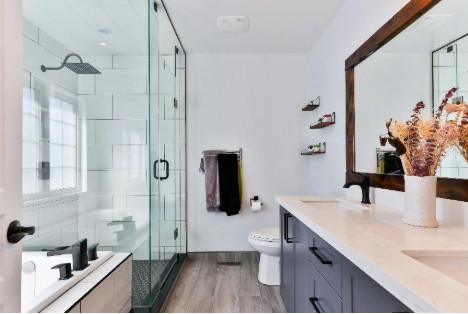Every home tells a story. From the scent that lingers in the entryway to the layout of a living room, the details of a space shape how it feels—and more importantly, how its inhabitants feel. Yet, while aesthetics and functionality contribute to a home’s appeal, there’s a deeper force at work: psychology. The comfort experienced in certain environments is not solely a product of design or luxury, but of emotional and cognitive responses to subtle cues.
Some homes offer instant relief, calm, or contentment. Others feel sterile or restless despite their visual perfection. This phenomenon—where one space exudes comfort and another does not—is rooted in behavioral science and neuropsychology.
Human beings respond instinctively to spatial design, light, texture, temperature, color, and even scent. In communities like Creve Coeur, MO, where thoughtful living spaces are a reflection of both lifestyle and values, these psychological elements are often prioritized to create homes that foster emotional ease.
Understanding these responses reveals why some homes “just feel right,” and how to intentionally design for comfort rather than appearance alone.
The Role of Bathrooms in Comfort Psychology
Among all the rooms in a home, the bathroom holds a unique psychological function. It is where privacy is most respected and where rituals of cleansing, preparation, and self-care occur. Unlike the communal nature of kitchens or living rooms, the bathroom offers solitude, often the only space where individuals can be completely alone without expectation or interruption.
This sanctuary effect is essential to comfort. Bathrooms are typically the setting for stress-reducing activities: hot showers, skincare routines, baths, and the symbolic washing away of the day. As such, their design directly influences mental wellness. Factors such as warm lighting, tactile surfaces, soundproofing, and even the arrangement of toiletries can evoke serenity or anxiety depending on their execution.
When bathrooms are thoughtfully designed, they promote restoration and tranquility. That’s why tailored upgrades and aesthetic revisions are increasingly popular. Homeowners who invest in bathroom remodeling services in Creve Coeur, MO, often seek more than just modern finishes—they’re creating a wellness chamber, designed to support daily rituals and peace of mind.
In an area known for its emphasis on residential refinement and a quiet, wellness-oriented lifestyle, such improvements reflect not only aesthetic choices but also a deep understanding of environmental comfort and emotional well-being.
Comfort here is less about opulence and more about psychological harmony. A poorly designed bathroom with harsh lighting, echoing acoustics, or outdated fixtures can sabotage morning routines or undermine end-of-day decompression. In contrast, a refined bathroom that aligns with personal rhythms becomes an emotional reset button, offering consistency, privacy, and quietude in a busy life.
The Impact of Spatial Layout and Flow
Beyond individual rooms, the arrangement of a home profoundly shapes comfort. Human cognition responds best to environments that are predictable yet varied, open yet defined. This balance is achieved through the spatial flow—the way rooms connect, the orientation of furniture, and the ease with which someone can move through a space.
Disjointed layouts create subconscious stress. A cluttered corridor or obstructed walkway interrupts natural movement, which in turn increases frustration and reduces comfort. Conversely, when a home’s circulation feels intuitive—when one can navigate without effort—it nurtures a sense of control and ease.
The Power of Lighting: Setting the Emotional Tone
Lighting is often described as a technical necessity, but in truth, it is a deeply emotional tool. It modulates mood, energy, and spatial perception. Dim, warm lighting calms the nervous system, prompting the release of melatonin and preparing the body for rest. Bright, blue-toned lighting increases alertness and cognitive function, which is why it dominates workspaces and kitchens.
Homes that feel naturally comforting often harness layered lighting—ambient, task, and accent—to create dimension and mood flexibility. For instance, a reading nook with a soft-glow lamp promotes focus without agitation. A kitchen with adjustable overheads allows seamless transition from functional to social use.
Texture, Sound, and the Tactile Environment
The way a space feels physically—through touch, acoustics, and even movement—also determines how it feels emotionally. Humans are tactile creatures. The textures we interact with daily influence not just sensory satisfaction, but also perceptions of warmth, quality, and care.
Soft fabrics, smooth wood grains, and natural stone surfaces all evoke grounding responses. They appeal to our primal instincts, rooted in nature. In contrast, synthetic or overly polished materials may feel impersonal or cold, especially in areas meant for relaxation.
Sound is equally important. A home that buffers outside noise promotes psychological recovery. Bedrooms insulated from street sounds, kitchens with quiet appliances, and flooring that mutes footsteps all contribute to restful atmospheres.
Scent and Memory: Invisible Triggers of Belonging
Scent is among the most powerful psychological anchors in the home environment. Olfactory receptors connect directly to the brain’s limbic system, which governs emotion and memory. This is why a specific candle, laundry detergent, or even floor polish can trigger feelings of nostalgia or security.
Comfortable homes often carry a consistent scent profile that aligns with the personality of their occupants. This may be deliberate—through incense, essential oils, or diffusers—or passive, through the materials used in construction and decor.
Moreover, scents become rituals. Lighting a scented candle in the evening can signal wind-down time, while the smell of coffee in the morning marks the start of a new day. These olfactory routines provide psychological structure, enhancing the experience of home as a safe and familiar space.
Personalization and the Sense of Ownership
Arguably, the most critical element in creating home comfort is personalization. A space that reflects personal stories, tastes, and values fosters belonging. Generic or impersonal interiors may look clean and modern, but they rarely feel emotionally nourishing.
Photographs, heirlooms, books, artwork, or even quirky collectibles transform rooms into reflections of their owners. This individualization is what turns a house into a home. It signals that the space is not merely lived in, but loved.
Psychologically, personalization satisfies the human need for identity expression and territoriality. People are more comfortable in environments they can control and modify. Even rearranging furniture or adding a new blanket to the sofa creates a subconscious sense of renewal and control.
True comfort in the home is not accidental, and it is not about extravagance. It is the result of intentional, human-centric design that acknowledges the nuances of how people feel, move, and restore within a space. From the privacy of a bathroom to the warmth of lighting and the familiarity of scent, comfort is crafted through psychology, not price tags.




